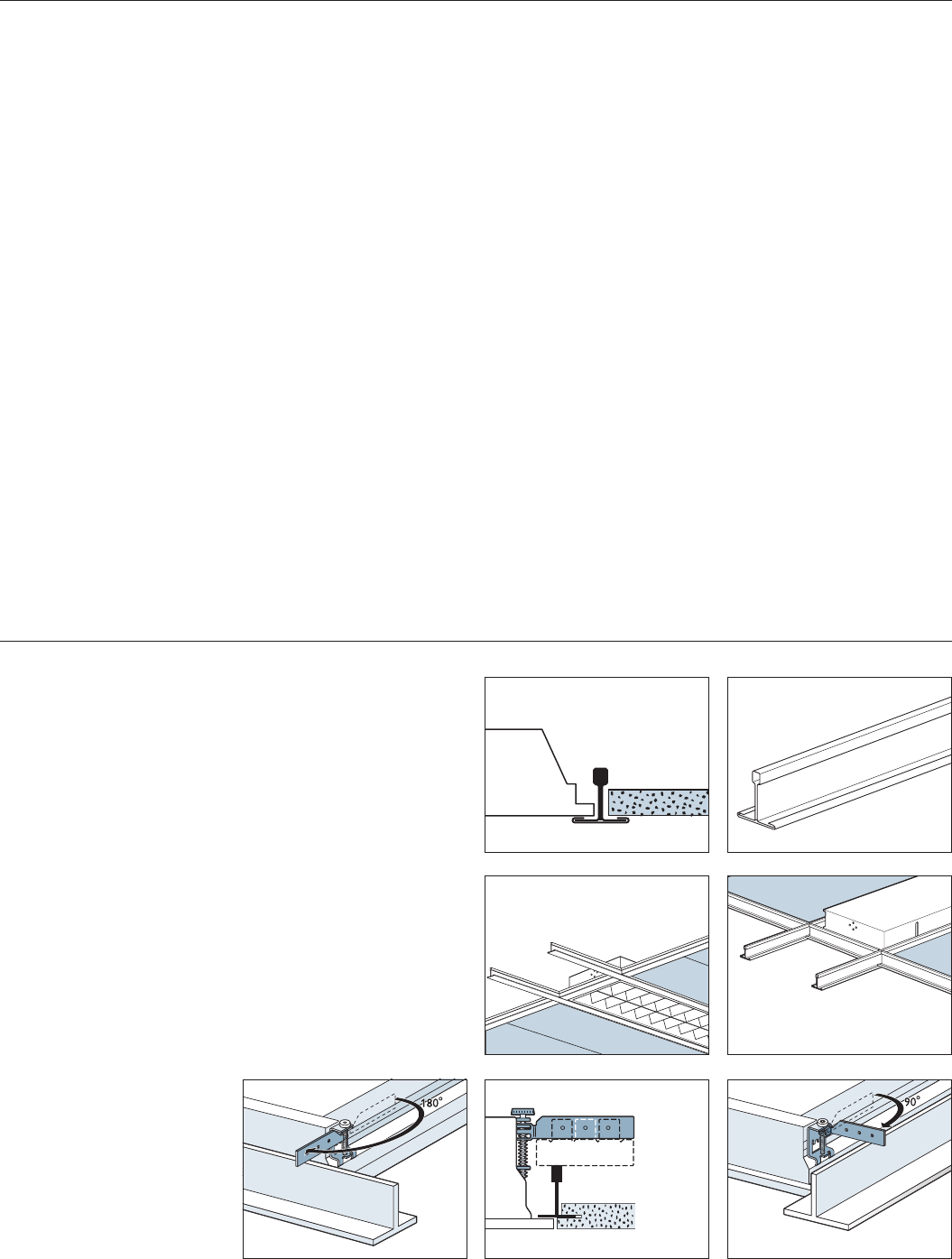
Philips indoor luminaires12.32
Specication data luminaires
Technical data
2. Concealed prole ceilings
Inthistypeofceilingtheproles
are covered by the tiles and
therefore invisible. Tiles are made
from a mineral type of material or
metal. In these types of systems
suspension brackets are always
needed for luminaire mounting.
1. Visible prole ceilings
Inthisverycommonsystem,prolesarealwaysvisible.Ceilingtiles
restontheprolesandareinmostcasesmadefromamineral
material. The two standard module sizes are 300 mm and 312.5 mm.
The most popular tiles in this type of ceiling are for ceiling grids of
600 mm x 600 mm and 600 mm x 1200 mm, or 625 mm x 625 mm
and 625 mm x 1250 mm. In this type of modular ceiling the luminaires
are mounted as an inlay.
Applications
These ceiling types are usually applied when electrical wiring,
LANs and other technical installations are hidden behind the ceiling.
Also in this application the ceiling should contribute to the acoustic
environment. All Philips recessed luminaires are suitable for this kind
of ceiling.
False ceilings
Ceilingtypes–introduction
Today, architects and building contractors can choose from an
enormous variety of ceiling systems, especially ones designed for
ofcesandothergeneralapplications.Useofclimateceilings(cooled)
is growing.
Thevemainstandardceilingtypesare:
1.Visibleproleceilings
2.Concealedproleceilings
3. Strip ceilings
4. Panel ceilings
5. Plaster ceilings
Obviously, there are small differences between ceiling types, but the
application of luminaires and the accessories you will need for their
mounting are
basically the same for all these systems.
Therstfourstandardceilingtypesdiscussedhererepresentthe
vast majority of ceiling systems currently available. Also real “project-
made”plasterceilingsareusedmoreandmoreandconsideredto
be aesthetically pleasing solutions. If you decide to use another type
of system, contact your Philips organization and they will inform you
abouttheoptionsinyourspecicsituation.Ifnostandardsolutionis
available,aspecialsolutionintheluminairehousingorttingcanbe
discussed.
Ceiling tile materials
Different ceiling types use panels or tiles of different materials.
Themostpopularmaterialsare:
Mineral (hard and soft)
These are produced in thicknesses between 14 and 20 mm.
Mineral tiles are usually painted and always mechanically vulnerable.
Acoustic qualities of these types of ceilings are reasonable.
Plaster
Plaster ceilings are usually 10 to 15 mm thick and are non-removable
ceilings. When recessed luminaires are to be used in this kind of ceiling
an opening has to be cut out before mounting the luminaire.
Metal
Metal is available in the shape of tiles, strips and panels. In some cases
they are perforated and have a sound-insulating layer on top. This layer
helps to create good acoustic quality. Recessed luminaires are usually
designed so that they can replace a complete ceiling tile.
Indoor_2008_Chapter_12_LIS.indb 32 20-05-2008 14:34:21


















